In This Inspiring Sequel To The Pura Belpré Award–winning, “dazzling And Insightful” (bccb) I Lived On Butterfly Hill, Thirteen-year-old Celeste Marconi Returns Home To A Very Different Chile And Makes It Her Mission To Rebuild Her Community, And Find Those Who Are Still Missing. During Celeste Marconi’s Time In Maine, Thoughts Of The Brightly Colored Cafes And Salty Air Of Valparaíso, Chile, Carried Her Through Difficult, Homesick Days. Now, She’s Finally Returned Home To Find The Dictatorship Has Left Its Mark On Her Once Beautiful And Vibrant Community. Celeste Is Determined To Help Her Beloved Butterfly Hill Get Back To The Way It Was And To Encourage Her Neighbors To Fight To Regain What They’ve Lost. More Than Anything, Celeste Wishes She Could Bring Back Her Best Friend, Lucilla, Who Was One Of Many To Disappear During The Dictatorship. Celeste Tries To Piece Together What Happened, But It All Seems Too Big To Fix—until She Receives A Letter That Changes Everything. When Celeste Sets Off On Her Biggest Adventure Yet, She’ll Uncover More Heartbreaking Truths Of What Her Country Has Endured. But Every Small Victory Makes A Difference, And Even If Butterfly Hill Can Never Be What It Was, Moving Forward And Healing Can Make It Something Even Better.
Literacy
Amal Unbound

In Pakistan, Amal holds onto her dream of being a teacher even after becoming an indentured servant to pay off her family’s debt to the wealthy and corrupt Khan family.
Featured in WOW Review Vlume XI, Issue 2.
My Brigadista Year
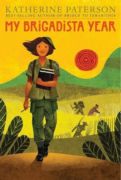
When thirteen-year-old Lora tells her parents that she wants to join Premier Castro’s army of young literacy teachers, her mother screeches to high heaven, and her father roars like a lion. Nora has barely been outside of Havana — why would she throw away her life in a remote shack with no electricity, sleeping on a hammock in somebody’s kitchen? But Nora is stubborn: didn’t her parents teach her to share what she has with someone in need? Surprisingly, Nora’s abuela takes her side, even as she makes Nora promise to come home if things get too hard. But how will Nora know for sure when that time has come?
Gift Days
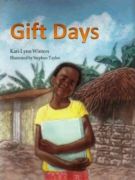
Young Nassali longs to read and write like her brother, but since her mother’s death, Nassali is responsible for looking after her younger siblings and running the household. There is no time for books and learning. Then one day, she wakes up to discover that her chores have been taken care of. It is her first gift day. From that day on, once a week, her brother gives Nassali the gift of time so that she can pursue her dream of an education, just as her mother would have wanted.
Waiting for the Biblioburro/ Esperando el Bilioburro
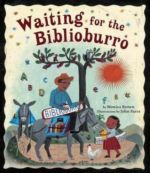
Teacher and librarian Luis Soriano Bohórquez packs his two burros, Alfa and Beto, with books and makes his way over mountains and through valleys to visit children in far-flung villages in rural Colombia all for the sake of literacy and culture.
The Girl Who Buried Her Dreams In A Can
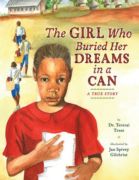
This is the story of a little girl with big dreams. All the girl ever wanted was an education. But in Rhodesia, education for girls was nearly impossible. So she taught herself to read and write with her brother’s schoolbooks and to count while watching cattle graze. When the girl became a young wife and mother, she wrote her goals on a scrap of paper and buried them in a can—an ancient ritual that reminded her that she couldn’t give up on her dreams.
When The Slave Esperança Garcia Wrote A Letter
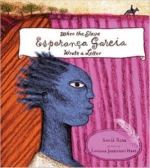
In 1770, the slave Esperança Garcia bravely penned a letter to the governor of Piauí state, in Brazil, describing how she and her children were being mistreated and requesting permission to return to the farm where the rest of her family was living. Before she wrote her letter, Esperança Garcia lived on a cotton farm run by Jesuit priests, where she learned to read and write — a rare opportunity for a woman, especially a slave. But one day, she was separated from her husband and older children and taken with her two little ones to be a cook in the home of Captain Antonio Vieira de Couto, where she and the other slaves were beaten.
The Red Pencil
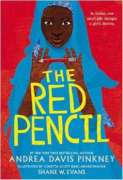
After her tribal village is attacked by militants, Amira, a young Sudanese girl, must flee to safety at a refugee camp, where she finds hope and the chance to pursue an education in the form of a single red pencil and the friendship and encouragement of a wise elder.
Featured in WOW Review Volume IX, Issue 2.
Communication: Means And Technologies For Exchanging Information
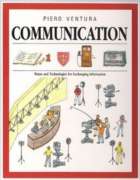
Shows readers how humans have developed various means of communication — from cave paintings and heiroglyphics to today’s newspapers and television.
When I Was Eight
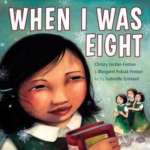
Olemaun is eight and knows a lot of things. But she does not know how to read. Ignoring her father’s warnings, she travels far from her Arctic home to the outsiders’ school to learn. The nuns at the school call her Margaret. They cut off her long hair and force her to do menial chores, but she remains undaunted. Her tenacity draws the attention of a black-cloaked nun who tries to break her spirit at every turn. But the young girl is more determined than ever to learn how to read.
